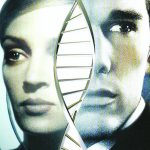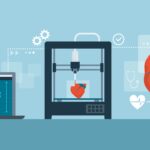Advances in technology mean we’re better at detecting DNA evidence – including from people whose cells hitched a ride on someone else.
California, 2012: a late-night home invasion goes terribly wrong, as millionaire Silicon Valley venture capitalist Raveesh ‘Ravi’ Kumra asphyxiates because of the packaging tape the intruders used to cover his mouth.
Several kilometres away, 26-year-old Lukis Anderson lies unconscious in the Santa Clara Valley Medical Center after being collected by paramedics. He has a blood alcohol level five times the legal limit, and was on 15-minute watch by medical staff because of his intoxication level.
Despite his seemingly ironclad alibi, Anderson was arrested on charges in association with Kumra’s death. He faced the possibility of the death penalty – all because his DNA was found on the victim’s fingernails.
The authorities later revealed that Anderson was “stone cold drunk” at the time of the murder-robbery. The same paramedics who delivered Anderson to the hospital later attended to Kumra and, it’s now thought, transferred Anderson’s genetic material onto the dead man.
In the investigation that followed, the ambulance service stressed they had the highest standards for cleanliness, including glove changes and sanitising vehicles. Deputy district attorney Kevin Smith told media group KPIX 5 he had no idea how it happened.
“It could be as simple as their bodies and their clothes coming into contact with Mr Anderson and then also Mr Kumra,” Smith said.
But this isn’t just a once-off curio. Forensic scientist Dr Georgina Meakin told The Medical Republic that anyone’s DNA, including that of medical professionals, could inadvertently wind up at a crime scene.
Dr Meakin consults on cases in Australia, UK, USA and Canada, and was the forensic scientist on the team that re-examined the evidence in a case for the BBC2: The Chillenden Murders’ documentary about a brutal double murder in England.
She’s particularly interested in deducing how DNA and other trace evidence can be transferred to – and recovered from – locations the person never visited.
“When you’re interpreting DNA at a crime scene or from an exhibit within a crime scene, it’s so important to try to establish whether that DNA was deposited directly – that is, by someone who was involved in the crime – or whether it got there indirectly. That’s where my research comes in,” says Dr Meakin, also a senior lecturer at the University of Technology Sydney.
Despite the enormity of the possible ramifications, DNA transfer is not a widely understood phenomenon, Dr Meakin adds.
DNA profiling was invented in the mid-1980s, when it was discovered that variations in individuals’ DNA could be used like fingerprints. But the technology required a large sample – such as a visible blood or semen stain – so it seemed implausible that the person wasn’t present.
“Then in 1997, two scientists at Victoria Police published a paper in Nature that showed if you touch something, you leave DNA and that can be detected,” Dr Meakin says. “They also showed that if you handled an object that someone else had handled, you could transfer on that DNA – so they were the first to show this concept of indirect DNA transfer.”
But for roughly a decade, the scientific community was reluctant to consider that it might occur outside a laboratory setting or be relevant to casework.
In the meantime, the technology used at crime scenes was becoming increasingly sensitive. This allowed DNA to be detected from invisible biological material rather than visible samples, and mixtures of DNA from multiple people began to appear in forensic reports.
“Around the mid-00s, it became more accepted that DNA transfer was an issue that needed to be taken into consideration. And since then, we have even more sensitive technology, so the prevalence of mixed DNA profiles is much, much more frequent,” Dr Meakin says.
“We are in some ways the victims of our own success: we’re getting better and better at detecting DNA, but worse at being able to say, ‘where is the DNA actually coming from, and how did it get there?’.”
Cases of alleged sexual misconduct are one example of the implications of indirect DNA transfer for medical professionals, Dr Meakin says.
A study of de-identified notifications to the Australian Health Practitioner Regulation Agency between 2011 and 2016 revealed sexual misconduct notifications were rare (1507 notifications among almost 725,000 registered health practitioners), but roughly one in five of the closed cases led to formal conditions, suspension or cancellation of registration.
Dr Meakin says she was aware of cases of a male doctor conducting an examination of a female patient in which the doctor was then accused of digital or penile penetration.
“If the patient alleges something and the medical practitioner denies it, that will also become an issue of what the biological source of the DNA is and how it got there. Did it get there the way the prosecution said, or did it get there during a routine examination or something of that nature?”
Dr Meakin says that, currently, the best way to make sure an innocent person is not convicted of a crime is to make sure they have a watertight alibi – though as history shows, that isn’t as straightforward as it sounds.
“With the case of the man in California – he was unconscious at the time the crime happened, and he was still imprisoned,” Dr Meakin says. “That’s the power of DNA evidence.”
Dr Meakin says part of the process involves studies where researchers know the “ground truth” – beginning with something directly observed or known to be true – to help them deduce the probability of different DNA profiles appearing.
“Say you’re at home on your own when a crime is committed – no one can verify that. So, scientists must evaluate the evidence in light of what the prosecution said happened versus the defence’s story, gather lots of data and look at the probability of seeing that DNA profile under different circumstances,” Dr Meakin says.
“For example, taking a group of volunteers who handle various items, we can see the proportion of DNA that comes from each person, or how often the person who handled it last will be the biggest contributor of DNA to the profile.”
These investigations may require huge amounts of data, along with specific training and expertise – they are used in some jurisdictions in Australia but not universally, she adds.
And there is debate in the scientific community around the best study designs to use. The Australia New Zealand Policing Advisory Agency (ANZPAA) points out there are many factors to consider, including that participants may behave differently if they know they are part of an experiment, it can be difficult to replicate casework, and examiners will have their own cognitive biases to contend with when designing and interpreting experiments and results.
The sophistication of our DNA testing capabilities also drives home how important it is for pathologists to be aware of possible DNA transfer when examining one body after another, as research shows DNA can be transferred between instruments in the morgue, Dr Meakin adds.
One obstacle is that most sterilisation processes focus on viruses and bacteria rather than human DNA – although there have been studies on effective cleaning solutions, she adds.
It’s possible that other commonplace procedures and tools, such as body bags, also facilitate DNA transfer. While research into potential routes of DNA transfer is still in its infancy, Dr Meakin hopes interest in the field will grow.
“It requires a lot of investigation to identify where that person [whose DNA profile is found] was. It’s a little like covid-19 contact tracing, where they’re working out how the virus has travelled between people.”






